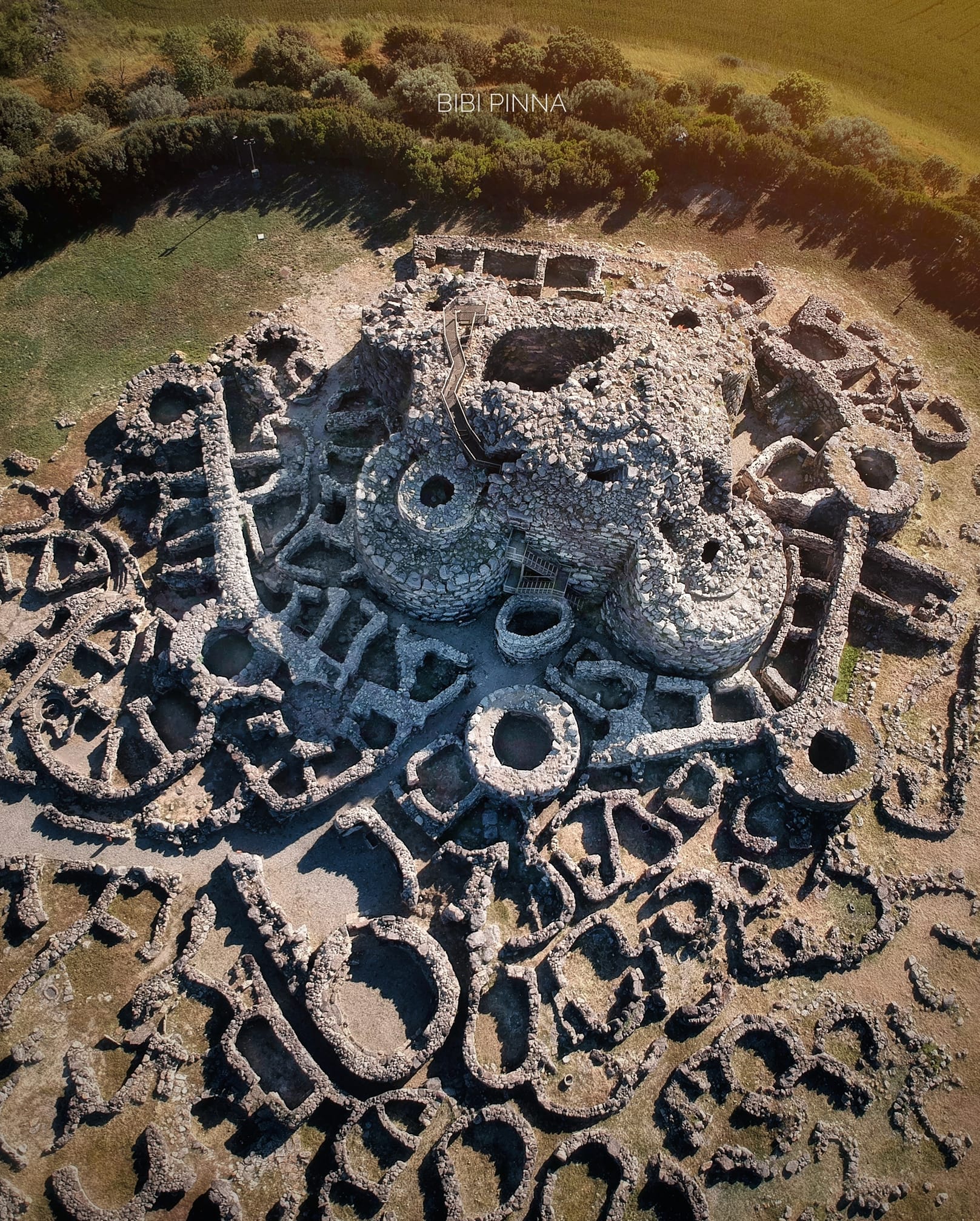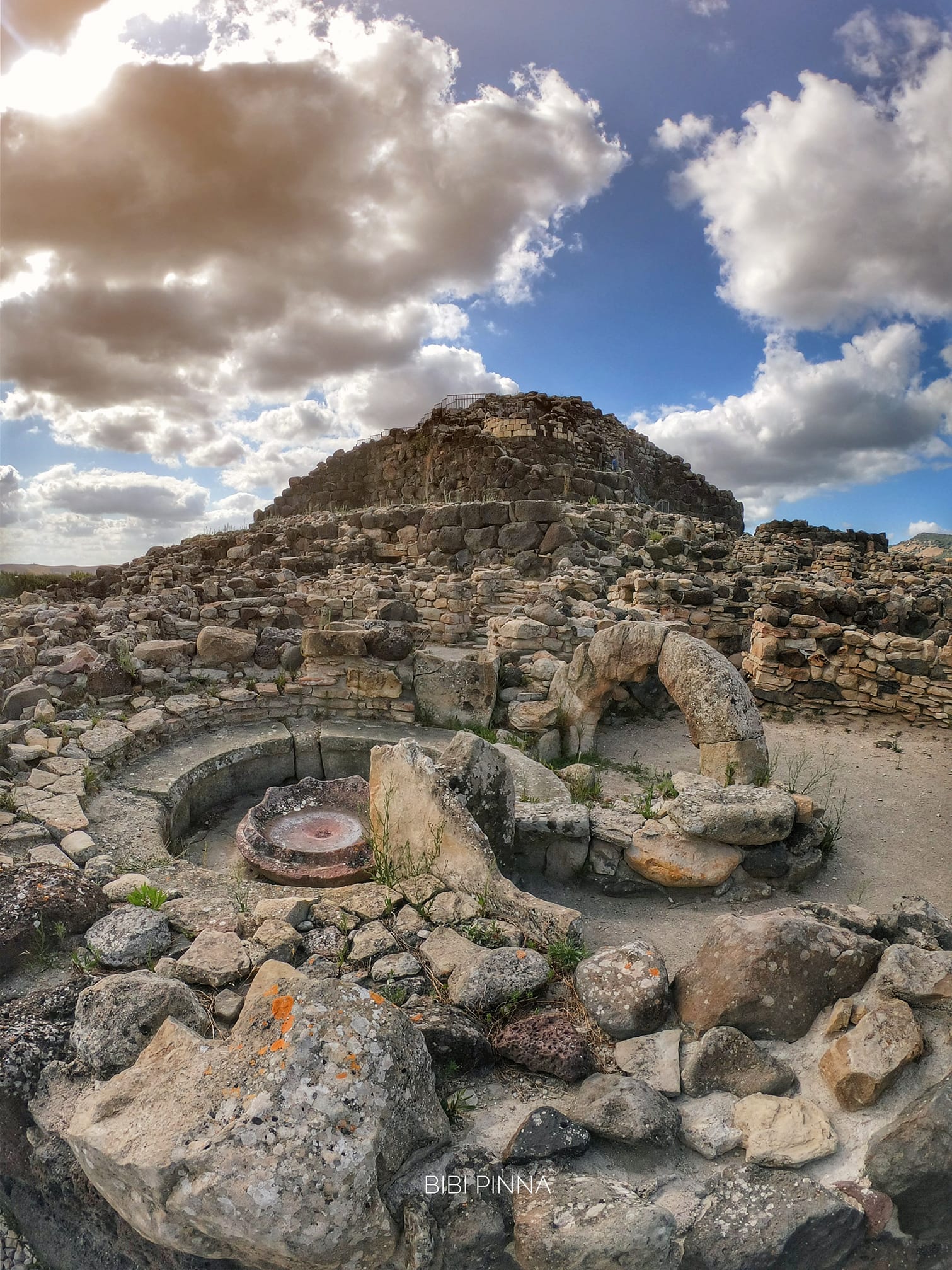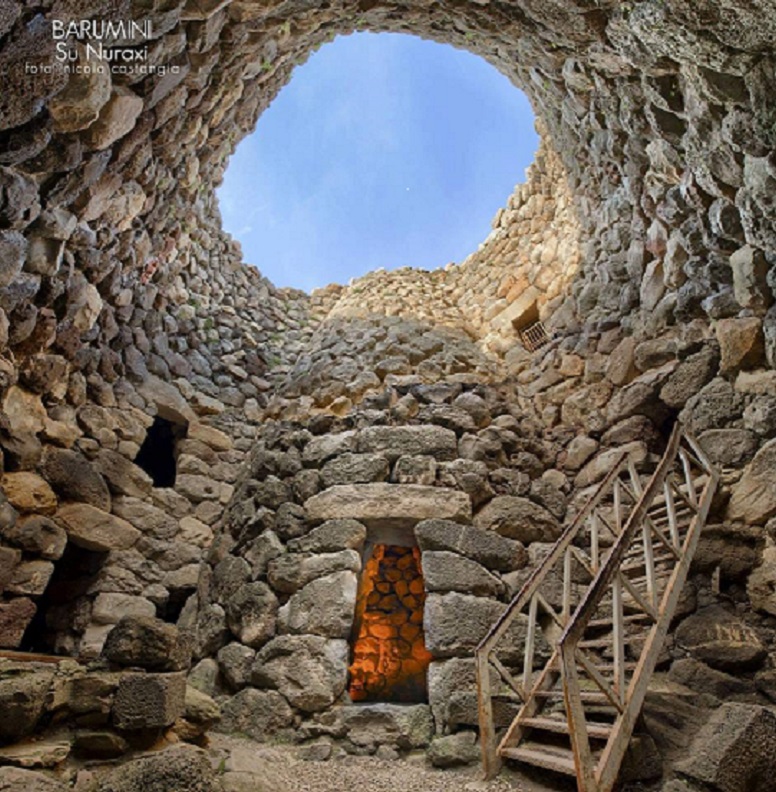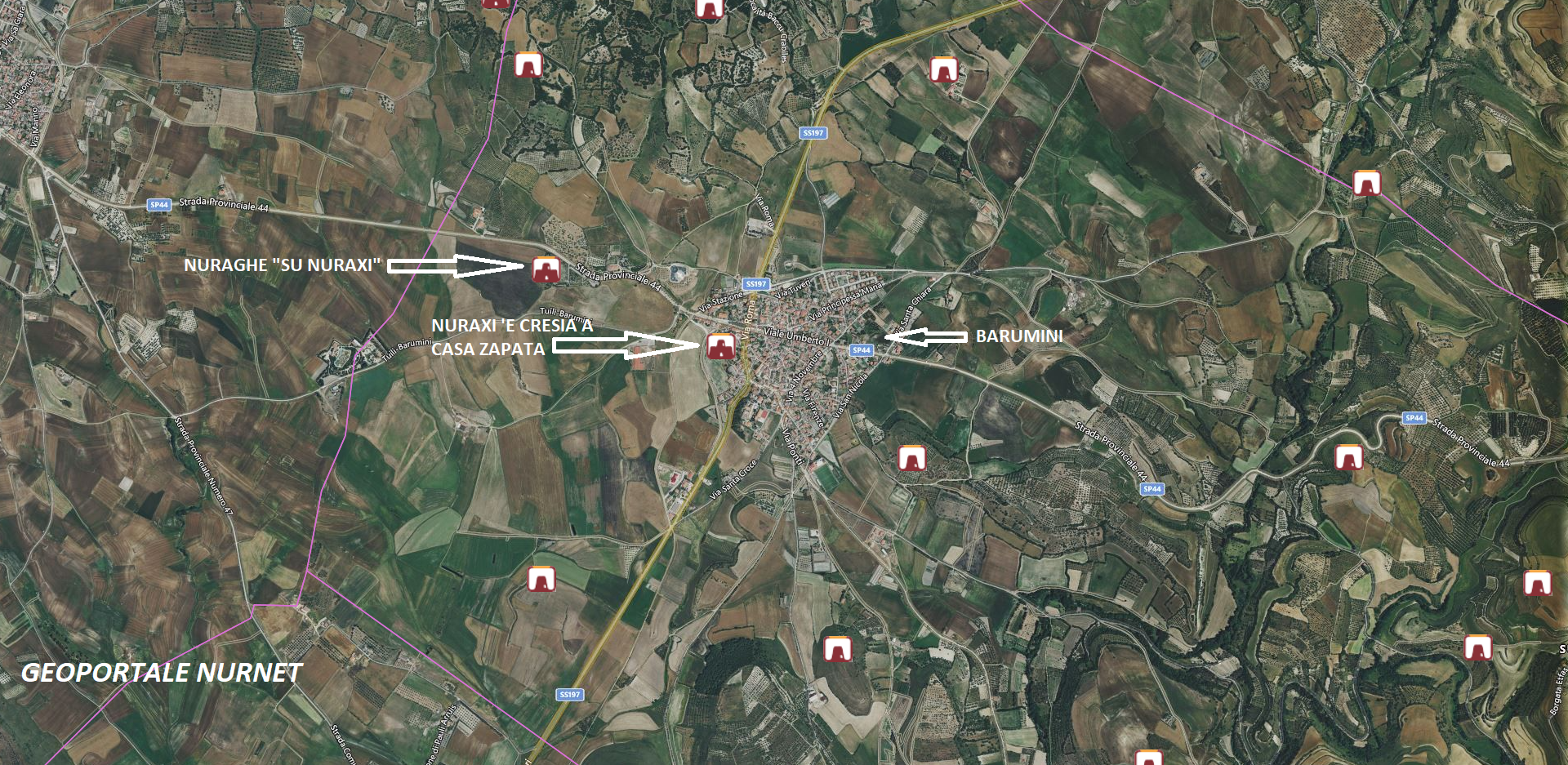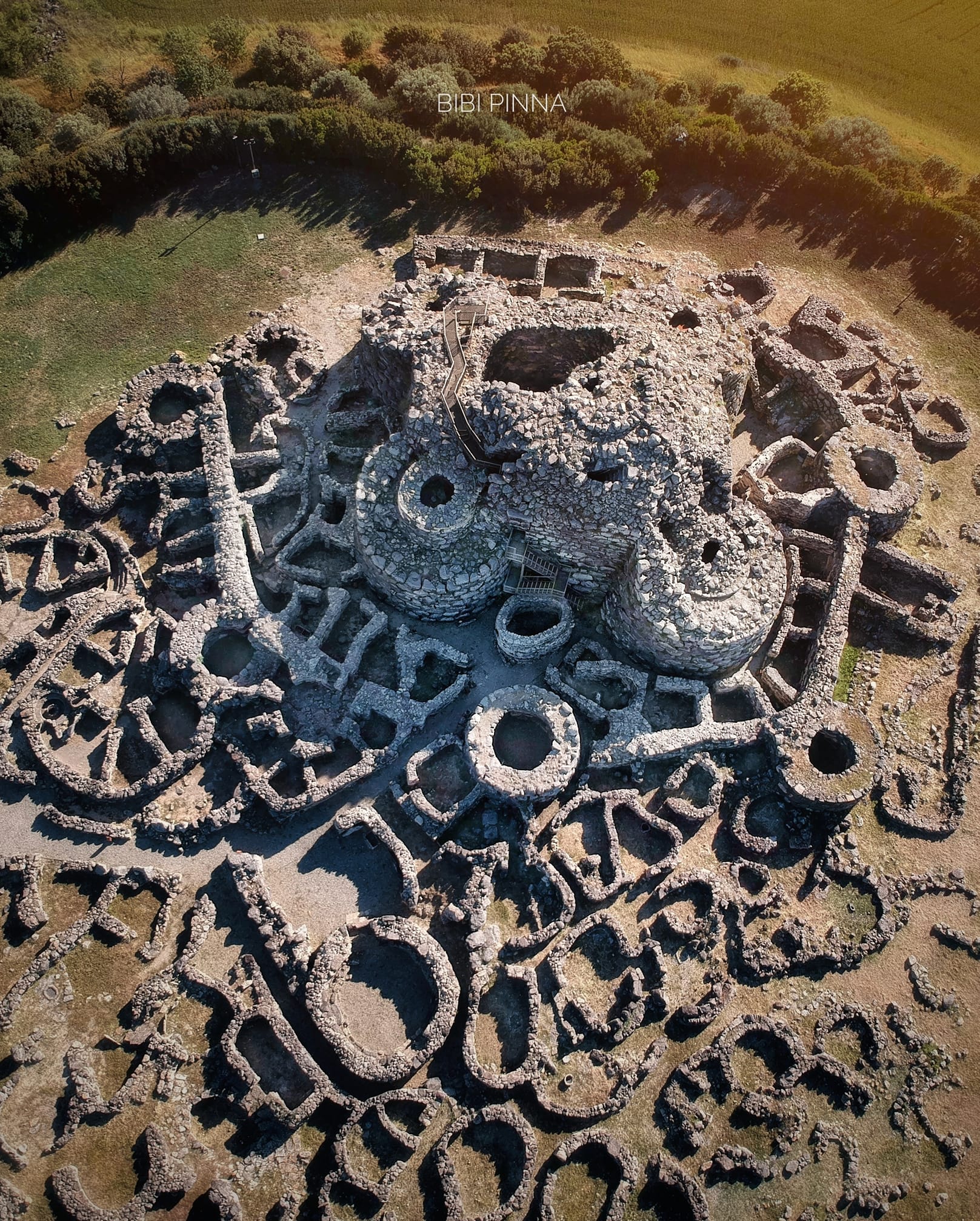19- The nuraghi of Su Nuraxi and Casa Zapata, in Barumini, are part of the monuments proposed to UNESCO as flag bearers of the grandiose nuragic civilization, its history, and its vast material testimonies.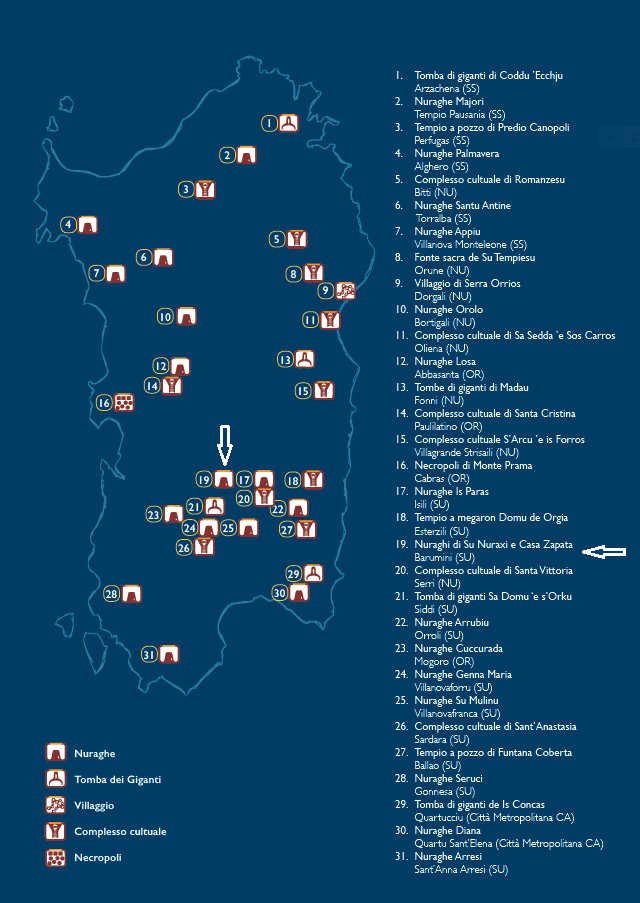 The nuraghe Su Nuraxi exhibits one of the most extraordinary architectural and planimetric layouts produced by the nuragic culture. It was declared a World Heritage site by UNESCO in 1997. The complex features various construction phases characterized by the use of local stone: the basalt of the Giara, which largely prevails, and the limestone marl.
The nuraghe Su Nuraxi exhibits one of the most extraordinary architectural and planimetric layouts produced by the nuragic culture. It was declared a World Heritage site by UNESCO in 1997. The complex features various construction phases characterized by the use of local stone: the basalt of the Giara, which largely prevails, and the limestone marl.
In the 1990s, it was discovered that the Zapata palace was built over the well-preserved remains of a nuragic settlement that the archaeologist Giovanni Lilliu named Nuraxi ‘e Cresia. Thanks to a highly impactful architectural restoration project developed by architect Pietro Reali, both the baronial palace and the underlying nuraghe, appropriately brought to light, have become the site of a museum complex, inaugurated on July 29, 2006.
The photos of the nuraghe Su Nuraxi are by Nicola Castangia, Valentino Selis, Bibi Pinna, and Francesco Ghiani. Those of Su Nuraxi ‘e Cresia at Casa Zapata are by Nicola Castangia and Romano Stangherlin.

